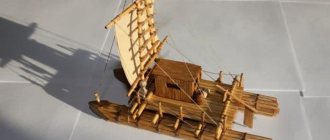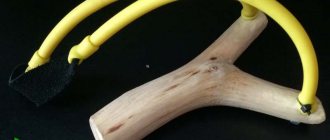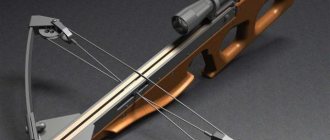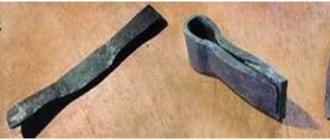Making a winter fishing rod with your own hands at home is not difficult. At the same time, it is important to understand the characteristics of the type of fishing for which the gear is being prepared. The fishing rod required for an active jig is not the same as for float fishing with a riser. A number of fishermen use, in principle, only homemade gear, while others modify store-bought options. It makes no difference whether the tackle is made independently or purchased in a store. A person catches fish using knowledge and skills, and a fishing rod is just a tool. Winter gear, due to its small size, is not as demanding on materials as long summer gear. You can literally make them on your knees using improvised materials. In this article we will look at how to make a homemade winter fishing rod. Let's look at various schemes and tips for homemade fishing rods for winter fishing.
Sparklers
Homemade gear for winter fishing with spoons, balancers and other artificial baits for predators differs from ordinary fishing rods in caliber. However, the thinnest and lightest fishing rods for noddle trolling are somewhat similar to reelless ones. Tackle for trolling deserves a separate discussion. The features of making such fishing rods yourself are outlined in a separate article. In this publication, we will look at how to make a winter fishing rod yourself for regular fishing, with a nod or a float, as well as for active fishing with jigs and reelless baits.
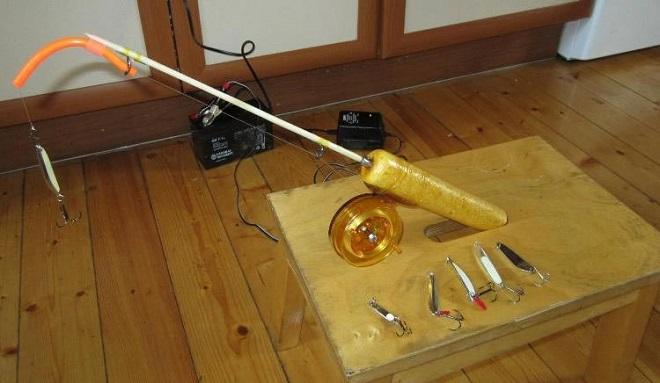
Homemade fishing rod stands
On the Internet you can find many photos of fishing rod stands. Fishermen share their experience and post drawings and diagrams of various supplies.
Read here Fishing boat - principles of use and secrets of catchability. Essence, effectiveness and features of use (125 photos)

There are very simple ones - from lids, jars and all sorts of useless things that came to hand. However, there are also worthy models. They are multi-level, foldable, with holders.

This model needs a little work. But the result will not keep you waiting. You will receive comfortable conditions for fishing.

Stationary fishing
Stand-up fishing is a classic of winter fishing that many beginners start with. It’s easiest to make a winter float rod (or nod) for stand-up fishing. There are no requirements for such a fishing rod that affect the performance of the jig. The main function is to store a supply of fishing line, ease of installation on ice, and quickly bring it into working position. The basic design is simple:
- A device for storing fishing line (reel or reel);
- Handle (often together with a reel, as on a filly, or with a reel, as on a balalaika);
- Whip;
- Legs (optional).
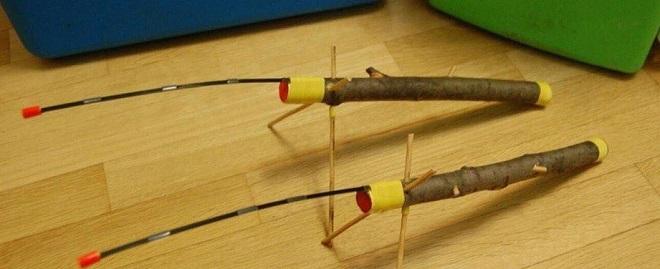
specific option depends on what the fisherman is going to make a winter fishing rod from. It is not the peculiarities of fishing tactics that are of great importance, but rather the personal preferences of anglers. An absolute plus of homemade products is that everything is made for yourself. The process of making winter fishing rods with your own hands with a float or nod, in essence, connecting the whip and handle, reel (reels) into a single whole. In stationary fishing, the equipment of the fishing rod itself is more important, and not the fishing rod, which performs secondary functions. Therefore, when making or thinking through the design of a fishing rod, an angler can take certain liberties.
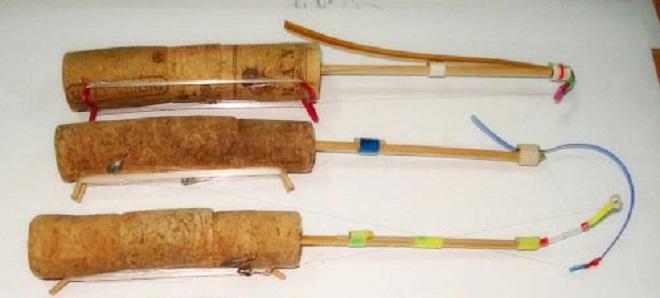
fillies
The simplest do-it-yourself winter fishing rod, a filly, is made from a piece of hard foam or other similar material. Previously, the filly's body was carved from wood. Now it is advisable to use polystyrene foam or other plastics - they are easy to obtain and process. And they are much lighter in weight than wood. The process of making a winter fishing rod from polystyrene foam or polystyrene foam with your own hands takes a few minutes. Reels are cut from a block of material with a knife, then the workpiece is processed with sandpaper or a file. The whip is glued into the filly with epoxy resin or any glue that does not dry out in the cold and does not corrode the foam.
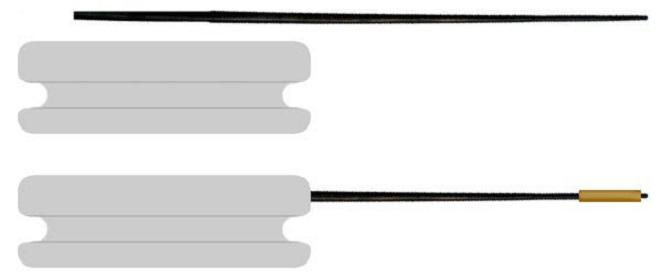
As a whip, you can use store-bought polycarbonate or vinyl sixes, fragments of summer gear, as well as improvised materials - for example, plastic knitting needles from an umbrella or the feathers of a broom. In principle, such a fishing rod can already be used on a pond. The line is wound onto the reel, passed through the cambric (nod connector) on the whip and equipped. If you get confused, you can devote more time to this workpiece for the sake of ethical beauty - properly sand it, paint it.
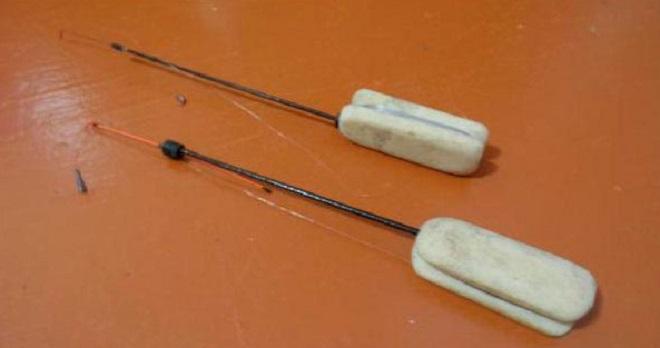
With handle and reel
You can make a fishing rod for winter fishing with a reel. This type of gear is more convenient for use at depth. Making it is not much more difficult than a filly. The principle is the same, just instead of cutting out the reel, a reel is attached to the handle. The handle of such a winter fishing rod is made by hand from any suitable materials. Polystyrene foam, cork, wood, mop handles, fluoroplastic, plastics - the list goes on and on. The simplest way is to put several wine corks on a whip and place it on glue. A homemade winter fishing rod with a reel is made in various versions, as long as the design meets the fishing requirements. There are a lot of homemade products on the pond. This is a huge field for experimentation.

An important point is to think in advance about the result you want to get. A lightweight small fishing rod is suitable for catching small fish in the shallows. When fishing in currents and depths with bottom rigs, you will need a fairly massive fishing rod that can stand stably above the hole when the current affects the fishing line. You can attach a lead plate to the handle for counterweight - so that the fishing rod does not dive like a whip into the hole. A good idea can be borrowed from winter trout fishermen - place a 20 cm student's ruler on the whip. Then a large crucian carp or bream will not be able to drag the fishing rod into the hole from a gaping angler.
Fishermen often engage in making homemade winter fishing rods just for the sake of the process. At the same time, do not forget about the fishing conditions for which the tackle is made. It is impossible to fully describe all the options - each master considers his own design to be the best. For practicality purposes, the simpler the better. If there is a desire to tinker, we collect more complex options while passing the time in the off-season. If you try, you can carve a balalaika from wood. The end result is to achieve smooth rotation of the coil in the cut-out niche. The simplest winter fishing rod and reel with your own hands is a whip, a handle and a small summer reel attached to it with electrical tape. For stand-up fishing, it is useful to equip fishing rods with legs.

Legs
When equipped with a float, the fishing rod can simply be placed on the ice next to the hole when fishing. But for nodding installations, the whip is placed directly above the hole for the correct position of the guard. For ease of installation, such fishing rods are equipped with legs. You can make legs for a winter fishing rod with your own hands from any suitable materials. The simplest thing is to twist a wire or attach an ordinary clothespin to a whip. The trout fishing ruler is both legs and protection against the tackle being dragged into the hole.
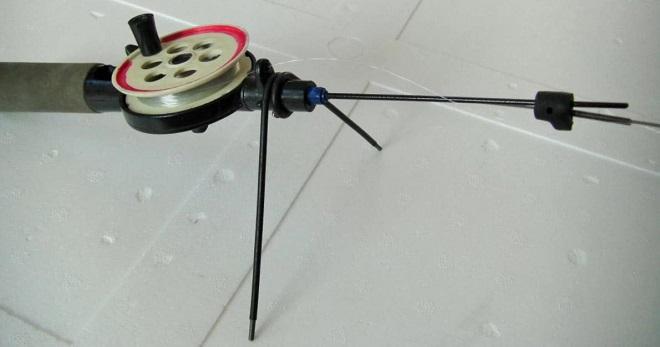
Equipment
If the configuration of the fishing rod allows some liberties in the design, then the equipment requires increased attention from the angler. This is the most important part of the tackle, which catches fish directly. Depending on the fishing conditions and the type of fish, various winter rigs are used, with a nod or a float. The float rig is adjusted so that when lifting the hook with a hook (jig) from the bottom, the fish does not feel the weight of the bait. To do this, the float and weight are adjusted so that the entire equipment has a slightly negative buoyancy. This is the only way the float will compensate for the weight of the bait when it surfaces. About float equipment in winter.
Nodding installations are made according to the same principle. Here the compensating function is performed by a correctly configured guard. About the nodding winter rigging of fishing rods.
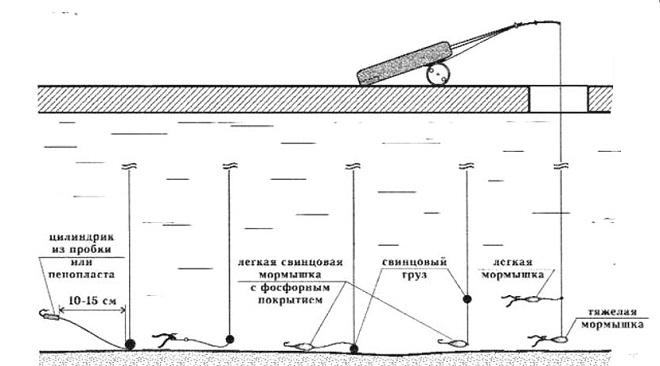
Coil selection
There are no special requirements for a side fishing reel. There is no need to throw the tackle. Braids are not used when fishing; the quality of the inertia-free line laying roller and the quality of line laying are not of great importance.
To equip an onboard fishing rod you can use:
- plastic or metal inertial coil;
- a small lack of inertia;
- multiplier, both a regular spinning rod and a winter one, for catching predators from the ice.
A simple inertia rod is a good choice if you want to land fish while holding the line with your hands, so that the rod itself does not participate in the process. The reel in this case will be used only as a container for the fishing line, onto which the thread can be quickly wound and also quickly wound. Small, simple inertia reels are the lightest and cheapest of all fishing reels.
If you want to catch fish with a fishing rod, then you should equip the tackle with a high-quality inertia-free or multiplier. These reels have a good friction drag, which will be very useful when fighting fish. The main thing is to remember to set the clutch correctly so that the line comes off the spool neither too easily nor too heavily.
Attachment jig and reelless jig
For active play, do-it-yourself ice fishing rods are made more carefully. All components are important here:
- Lightness of gear;
- Elasticity of the whip;
- Correspondence between the caliber of the fishing rod and the fineness of the equipment.
When fishing with a jig, game is important, and without finely tuned gear it cannot be achieved. Therefore, for a jig you will need both light and convenient, simple and reliable gear. Let's look at what you can use to make a winter fishing rod for active jig play.
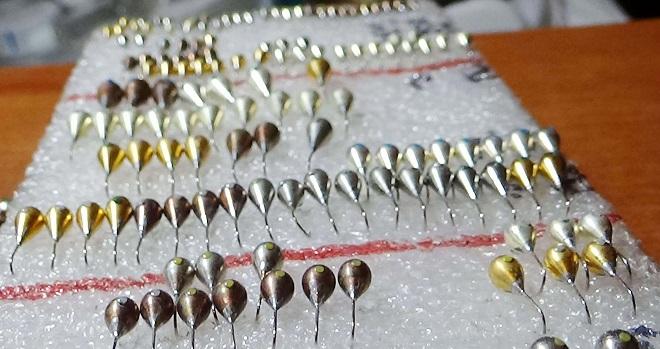
Stoppers, washers and the like
The simplest homemade winter fishing rod for a jig is a washer (cork). This type of gear is a reel made of cork (foam) with a whip attached to it. The reel is sharpened, the groove for the fishing line is sanded. The whip is glued in at a slightly downward angle. You need to achieve such a position that when a large fish pulls strongly, the line unwinds from the reel with some effort. This is protection against breakage during jerks.
A further development of the idea is Shcherbakov’s puck. To make the tackle even lighter, the middle is selected from the workpiece. The washer itself is made of hard foam. Such homemade winter fishing rods made of foam have the minimum possible weight and fit comfortably in the hand. For a winter nodless reel, the main attention is paid to the whip, since it is this element of the fishing rod that is responsible for the correct play of the jig and the sensitivity of the tackle. Usually these are carbon whips or fiberglass. Read more about the correct tackle for jigs.
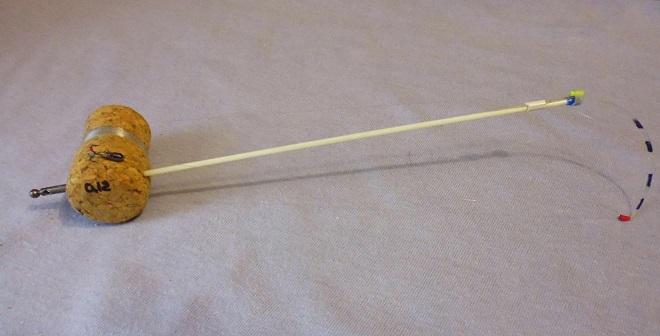
The bone in its minimal version is perfect for use with devils and heavy borers. More often, such tackle is used for trolling with light baits. However, nothing prevents you from making it in a lighter version and using it with a jig. This is something between a filly and a puck. The reels are machined into a slightly different shape.
In jig gear, the six itself is more important, and not the line storage system. If you have the required tip, you can simply attach two eyes to its lower part for winding the fishing line - you will get a miniature and sensitive fishing rod.

Purpose of various fishing rods
The simplest and most common fishing rod is the fly rod. This is a wooden or bamboo blank 2-4 m long, designed for fishing from the shore or boat. Typically, such a fishing rod does not have a reel, and wire hooks located at the bottom of the rod are used to wind the fishing line.
Match blanks are used for long-distance fishing. They usually consist of 3-4 legs and have a length of 2-3 m. Their design allows you to cast the tackle more than 50 m. Match fishing rods are equipped with special high-speed spinning reels, which makes it possible to quickly reel in the line from a long distance.
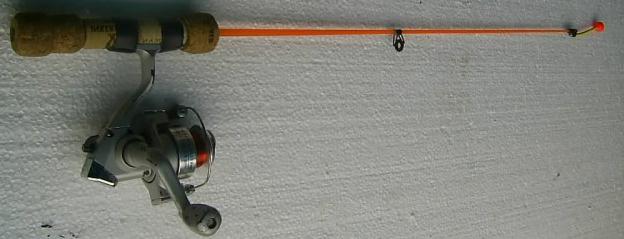
For fishing in places overgrown with aquatic vegetation, plug forms are used. Their distinctive feature is a special design that allows you to change the length by adding or removing knees. They are also equipped with spinning reels.
Bolognese or telescopic rods are the most universal type of blanks, familiar to every angler. Their main advantage over others is their ability to fold, which is very convenient for transportation.
Game fishing equipment
Do-it-yourself fishing rod rigging for ice fishing for game is made according to all the canons and rules of winter jigs. The main point is the correspondence of the thickness of the fishing line, the weight of the bait and the elasticity of the guard (no-kick six). Experienced jig makers prepare a whole set of gear for various conditions so as not to have to deal with tying while fishing. More details can be found in the block of articles on our website about jigs and reelless jigs.
Subscribe to the channel:
My YouTube channel RYBAFAN on fishing:
We're OK
Line selection
To equip the onboard fishing rod, monofilament lines are used. Since fishing takes place over a short distance, it is better if the thread has good stretch. Such a line will absorb the jerks of the fish, and there will be a minimum of derailments. The diameter must be selected to match the size of potential trophies, usually 0.2-0.25 mm. for catching white fish and 0.3-0.35 mm. for hunting predators. The suitable thickness of the fishing line for the leash is, respectively, 0.15-0.2 mm. or 0.2-0.25.
To equip a side fishing rod, a 30-m main line will be sufficient. You can take more, with a margin of 40–50 m.


